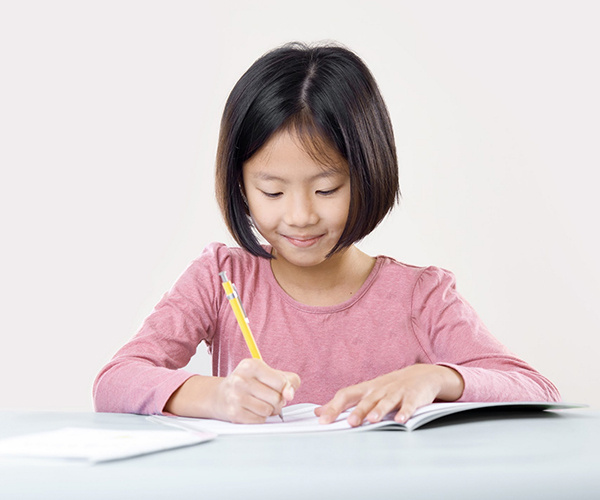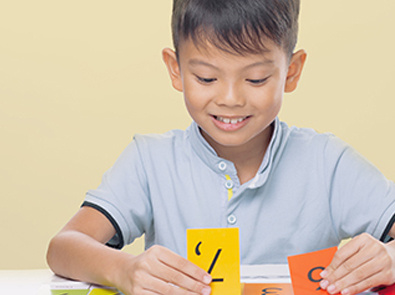
New year, new school, new opportunities for growth! Read our article as we share some tried and true tips for parents and children in the lead up to the first day of primary school.
A Whole New World Awaits
New classmates, new teachers, new school environment — your child’s tiny world is about to get a lot bigger. With these changes come opportunities for personal, social and cognitive growth.
The Countdown And Preparation Begins
In these weeks as you count down to your child’s first day of school, you may be wondering, “What will school be like for my child? Will my child be able to cope in the new environment?”
Parents can help by being proactive — research from professionals at Duke University suggests that establishing a strong communication channel with your child’s teachers helps and so does monitoring changes in your child's behaviour or mood when he or she first starts school.
Whether at home or in school, we’ve got some great tips for every stage of preparation that will help you (and your child) pave a smooth journey towards the new school term in January.
1. Create A Routine That Works
Studies have shown that routines help children feel safe and secure. Set up a routine that works for your child — whether it’s a shower before dinner or an afternoon snack before naptime, it’s important that your child gets into a routine that he or she is comfortable with.
2. Identify Friendly Figures In School
Helping your child identify teachers or staff he or she can go to for assistance is important. When your child recognises trustworthy figures of authority, he or she will feel more secure in the new environment.
Related Article: Gear Up For Primary 1
3. Prepare An 'Emergency' Fund
You may want to consider setting aside an “emergency fund” for your child. Placing extra money in a separate wallet or purse to be kept in his or her school bag means that your child will still have access to money if he or she misplaces pocket money. However, you should set some strict rules about when this money can be used.
4. Test Out That Transport Route
It may be a good idea to have a few dry runs of your child’s journey to and from school to help your child familiarise himself or herself with the route. Help your child identify key landmarks and remember the specific place where he or she will be dropped off or picked up from everyday.
Related Article: Raising A Responsible Child
5. Set Mini Goals To Achieve Together
Help to make the experience seem less daunting by setting mini goals for the first day of school. Start with small tasks like “Leave the house on time” or “Remember to bring my water bottle home” or “Meet one new friend in class today”. These mini goals give your child something to look forward to on his or her first day of school!
Download Our Special Guide To Surviving And Thriving In Primary 1
The Learning Lab would like to extend our help as you and your child are preparing for Primary 1 and the new adventures that lie ahead. Download our fun and informative guide filled with 25 great tips to help your child survive and thrive in Primary 1!
Writing is a creative medium for expressing thoughts and perspectives on diverse subjects. However, it can be difficult for your child to accurately convey his or her thoughts fluently in writing.
Writing essays and other literary compositions are an integral part of student life that extends to adult life. And although your child is far from the world of employment, it is worth noting that most jobs require writing skills at some capacity.
Here at The Learning Lab, we believe that effective written communication is a meaningful skill that helps our students become better at relaying information, conveying their thoughts and forming trusting relationships.
Nurture your child’s mastery of written English by introducing him or her to what we consider the five basic elements to writing an effective composition.

1. Determine the Central Idea of the Composition
An essay, as with most written compositions, has an introduction, a body and a conclusion.
The central idea connects these three parts to create one theme. It gives the composition direction and purpose, making it enjoyable and easy to read.
To bring out the central idea throughout the written composition, it is important to first identify the key words from the question. If the title or headline for the composition is provided, the key words would likely be supplied as well.
For example, if your child is tasked to write about “The Person I Admire the Most”, the key words are “person” and “admire”. In this case, the central idea would not only be about the person, but also about the qualities that make that person admirable and why.

2. Check That the Composition Has a Smooth and Cohesive Flow
Another element that makes a written piece effective is effortless flow. This involves weaving words, phrases, sentences and paragraphs together, in a logical manner, to support the central idea.
To achieve coherency, we recommend drafting an outline — an organised set of questions that will give your child clarity and direction in crafting the composition.
Using the same topic, “The Person I Admire the Most”, the outline may look like this:
Introduction
- Who is the person I admire the most?
- What makes this person distinctive?
Body
- What are the qualities I admire about this person?
- Why do I admire these specific qualities about this person?
Conclusion
- How does this person inspire me to become a better version of myself?
The outline helps both the writer and the reader understand the point of the composition in a smooth and logical manner.

3. Support Statements with Evidence
A composition supported by evidence in the form of interviews, dialogues, speeches, testimonials, personal accounts or citations from reliable sources suggests credibility and is more persuasive to the reader.
At the primary school level, students can provide anecdotal evidence — evidence collected in a casual or informal manner. They can rely on personal testimonies to provide real-life accounts and experiences to back up their ideas.
In secondary school, students are presented with several different topics or questions and may pick the one they wish to write about. These range from writing fictional stories to providing their thoughts on real-world topics like the impact of global warming.
As such, students in secondary school are encouraged to read up on worldly events so they remain updated on current issues and can incorporate quotes or facts into their composition where needed.

4. Evoke Emotion and Sustain Readers’ Attention
People read not only to be informed but also to be entertained, and perhaps to gain a new perspective about a subject or even to find inspiration.
A well-written composition captures and sustains a reader’s attention. Your child can achieve this by using descriptive words or phrases to bring out specific emotions in readers. Figures of speech are also helpful in injecting creativity in his or her written compositions.
Using metaphors and similes, for example, helps the reader understand a subject by comparing it to something else. If your child is describing a dull performance, he or she can write something along the lines of, “watching the show was like watching paint dry.''
Artful narratives help the reader relate to your child’s story more as compared to writing a matter-of-factly composition.

5. Work Towards a Distinctive Style
While the elements above are all very important in crafting an engaging and compelling composition, “style” is the one factor that can make a student’s composition stand out from the rest.
We don’t mean personality. What we mean by style is the manner in which a student consistently and distinctly writes. It’s the artistic flair with which ideas are put together in words.
Mark Twain, for instance, is best known for his humour and sharp social satire. Jane Austen’s writing is filled with irony and often features female protagonists, while JK Rowling’s prose is easily recognisable through her vivid imagination and invention of strange words.
At The Learning Lab, our teachers look at facts as well as opinions. We want to be able to assess, through students’ writing, how clear and creative these ideas are processed and presented.
Lastly, it’s worth reminding your son or your daughter that there are no set rules in writing. This is what makes the English language attractive and interesting — its contextual flexibility, socio-cultural variations and playfulness.
“And by the way, everything in life is writable about if you have the outgoing guts to do it, and the imagination to improvise. The worst enemy to creativity is self-doubt.” ― Sylvia Plath

Bring Out the Wordsmith in Your Child
The foundation of effective communication is literacy; the ability to read and write. But at TLL, we want our students to go beyond learning how to simply read and write.
In our English programmes, a lot of emphasis is placed on allowing our students to exercise their powers of putting the English language on paper; gaining confidence, picking up the tricks of the trade and tackling common problems along the way.
Through our simple yet effective 6-step structured approach to writing, we introduce students to good writing, teach them specific writing techniques and help them understand the importance of characterisation, tone and imagery.
From generating ideas and structuring the flow of the story for a story curve to detailing the characters’ successes or failures in the climax, click here to find out more about TLL's structured 6-step writing approach.

Early Years
Nursery 2 – Kindergarten 2
In addition to building a foundation for word recognition, vocabulary and sentence structure when it comes to writing, our early years programmes also inculcate fundamental skills in reading and speaking.

Primary
Primary 1 – Primary 6
At the primary levels, we help develop our students' ability to analyse questions, craft precise answers and produce writing of greater quality, sophistication and length to excel in all examinable components of the English subject.

Secondary & Junior College
Secondary 1 – Junior College 2
Our secondary to junior college programmes help students further develop their writing, speaking, comprehension and listening skills, enhancing their overall language appreciation and mastery.
